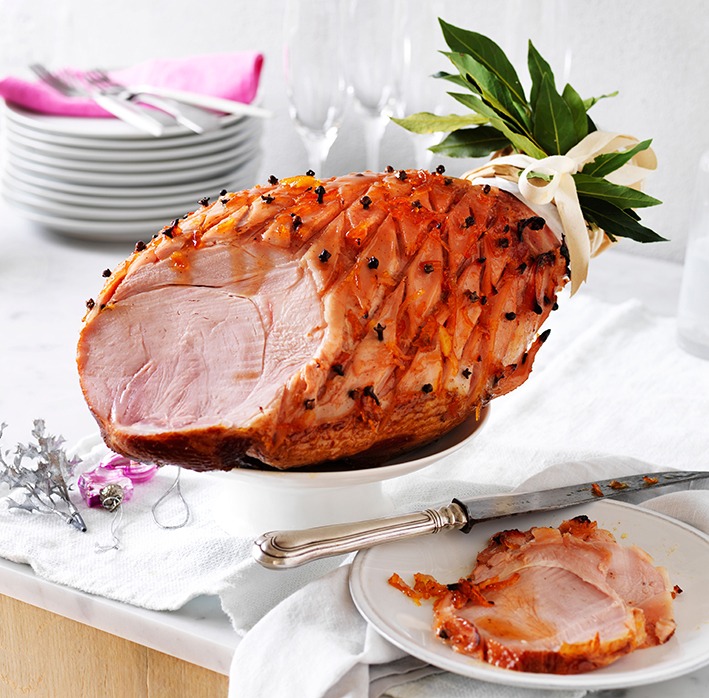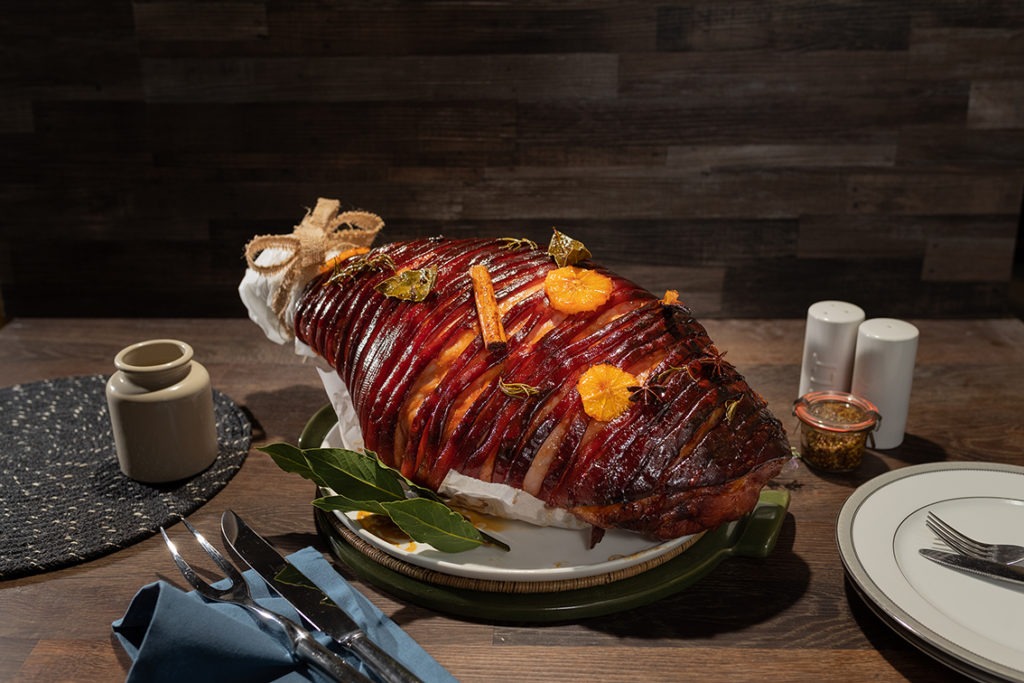The best way to ham it up this Christmas
Still tossing up where to source the perfect ham for Christmas lunch? Borrowdale, a Queensland-based supplier of Australia’s only carbon neutral ham, is not only free-range with no added hormones. They’re also raised entirely on Australian-run family farms.
Borrowdale has also taken responsibility for its footprint and carbon emissions across the entire business and every product it produces. So, the only thing you’ll be left feeling guilty about is how many times you’ll go back for another serve.
When attempting to take your Christmas ham to the next level, it’s important to ensure you start with a quality product. To guarantee each ham receives the time and care needed in order for that quality Christmas taste, Borrowdale hams are made in small batches. Each is cured using genuine Beechwood smoke, bringing to life an authentic artisan flavour.
To ensure your Borrowdale Christmas ham is cooked to perfection, chef Ryan McBurney has shared his top tips below.

Prepare like a pro
1. Plan the accompaniments that will go with your meal first. The oven will likely be out of action for the sole use of warming and glazing your ham. Think about utilising other heat sources, such as the BBQ or a hotplate.
2. To save on the mess of clean-up, use baking paper on a roasting tray.
3. Cooking a Christmas ham is a low and slow process. So make sure to allow plenty of time to achieve a moist result.
4. Ham is an already cooked piece of meat. The “cooking” process at home is only to warm up the core temperature to 60-65°C.
5. The natural flavours of a quality ham work really well with deep caramelised and acidic flavour notes. This is why a native honey and cabernet vinegar gastrique perfectly complements the hero ingredient.

Borrowdale baked leg ham in native honey and cabernet vinegar gastrique
You’ll need:
Borrowdale leg ham (½ or full)
10 cloves
½ cup locally produced native honey
1 cup cabernet red wine vinegar
1 cinnamon quill
2 star anise
1 orange zest and slices (use a peeler to remove zest, trim pith completely, cut orange in round slices)
3 fresh bay leaves
1 sprig rosemary
10g salt
Cracked pepper
Method:
1. Preheat oven to 140°C. Line an appropriately-sized roasting tray with baking paper and place ham on top with skin side up. At this point, use a small paring knife to scour the rind of the skin. Make cuts only 5mm deep to slice rind but not cut into the meat underneath.
2. For a traditional look, stud the cloves on the exterior of the pork leg.
3. Place ham and tray into oven with the shelf as far away from heat source as possible. If the heat element is on the roof of the oven, position tray at the bottom.
4. This is a low and slow process that can take anywhere from 2 to 3.5 hours, depending on your oven and the size of the ham. The best method is to use a digital thermometer to get a core temperature. Because the ham is already cooked and ready to eat, heating the ham to 60-65°C is best to ensure you don’t end up with a dry, overcooked ham.
While the ham is cooking:
1. Pour honey into a saucepan and place on a stove hob on high heat. Monitor this step closely, as the process is similar to making a toffee. The trick is to achieve a deep amber caramelised colour then to arrest the cooking process by pouring in the cabernet vinegar – be careful here as the mixture will bubble rapidly. This process brings a complexity and depth of flavour to the glaze by introducing caramelised toffee undertones that offset the sweet and sour notes of the artisan honey and vinegar.
2. Once vinegar has been introduced, add all remaining ingredients and reduce gently to a syrupy consistency, then let flavours infuse off the heat until the ham is ready to baste.
To baste and get ready to serve:
1. When ham has nearly reached the desired core temperature, use a silicone pastry brush to apply gastrique to outside of the ham. At this point, increase the temperature to 220°C for the last 15-20 minutes, removing at 5-minute intervals to apply more of the honey and cabernet vinegar gastrique until all is used up.
2. At this point, it’s possible to reduce your oven temperature to around 50°C to “hot hold” the ham temporarily without quality loss until you’re ready to transfer to the table.
Borrowdale free-range pork is stocked at independent supermarkets, butchers and restaurants across Australia. To find a stockist, head to borrowdalefreerange.com.au









